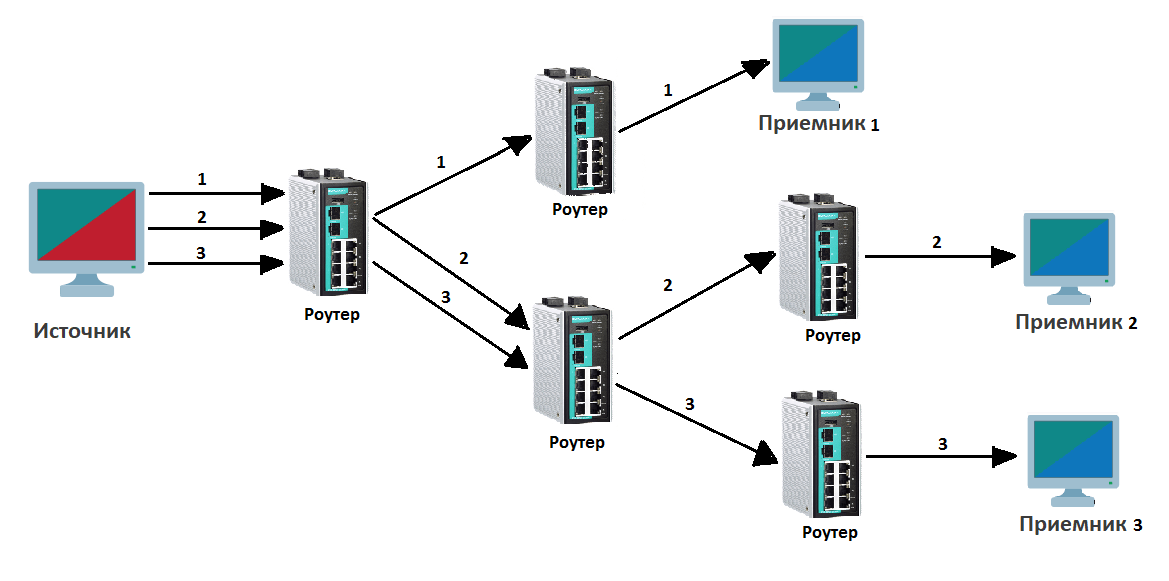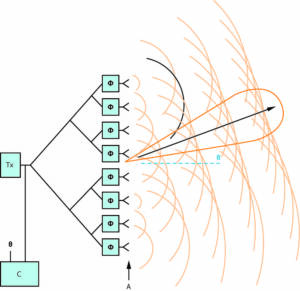Introduction to multicast technology
Multicast is a data transmission technology in computer networks that allows you to send information from one source to multiple recipients simultaneously. In other words, multicast allows you to transmit data to a group of computers that are interested in this information, without the need to send data to each computer individually. Multicast is used in many areas such as video conferencing, video and audio streaming, online games and real-time broadcasts . This technology can also be useful for transmitting data in healthcare facilities, educational institutions and other organizations where multiple users need to access the same data at the same time. Unlike broadcast technology, which sends data to all computers in network, multicast uses only the necessary resources to transfer information to specific computers, which can significantly reduce the load on the network. Various protocols can work with multicast, such as IGMP (Internet Group Management Protocol), PIM (Protocol Independent Multicast) and others. Each protocol has its own characteristics and can be configured for a specific type of network. In the following parts of the article, we will look in more detail at how multicast technology works, what its advantages and disadvantages are, as well as examples of its use in various areas. The operating principle of multicast is to transmit one data stream to several devices simultaneously. This can significantly reduce the load on the network, since data is not sent separately to each device. Instead, the data is sent to a specific group of devices that have signed up to receive that data stream.
To operate multicast, a special protocol is used - IGMP (Internet Group Management Protocol), which allows devices to subscribe to multicast groups and receive data from them.
One example of using multicast is IPTV – television broadcasting over the Internet. In this case, the television signal is transmitted in one stream to many devices that are in the same multicast group and subscribed to receive this signal.
Multicast is also used in various applications where it is necessary to transmit data simultaneously to several devices. For example, in video surveillance systems, where the video stream is transmitted to many devices simultaneously.
In general, the operating principle of multicast can significantly reduce the load on the network and increase the efficiency of data transmission.
The future of multicast technology
Multicast technology is a data transmission method that allows you to simultaneously deliver information to several users. Today, multicast is used in many areas, such as television, radio broadcasting, the Internet and much more.
Even though multicast technology has been around for a long time, its future looks promising. With the development of technology, the number of users who need fast and reliable data transfer is increasing. Multicast technology can be a key tool to solve this problem.
One of the directions for the development of multicast technology is its use in fifth generation communication networks (5G). 5G is a new mobile communications standard that provides high data transfer speeds and low latency. Multicast technology can become an important component of 5G networks, allowing data to be transmitted to many devices simultaneously and with minimal latency.
In addition, multicast technology can be applied in the field of the Internet of Things (IoT). With the increasing number of devices connected to the Internet, it is necessary to ensure fast and efficient data transfer between them. Multicast technology can be a solution to this problem, allowing you to transfer data to many devices simultaneously.
Thus, the future of multicast technology looks promising. It can become an important tool for data transmission in 5G and IoT networks, providing high speed and efficient transmission.
Read further:






